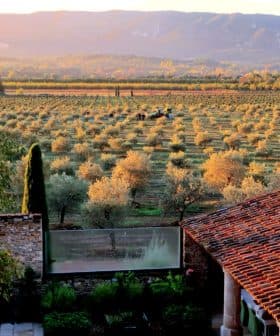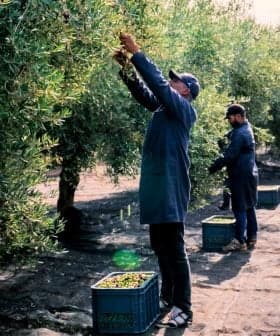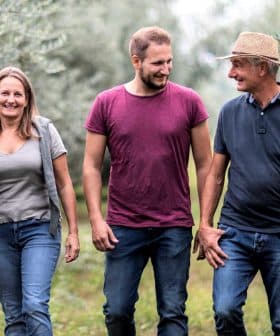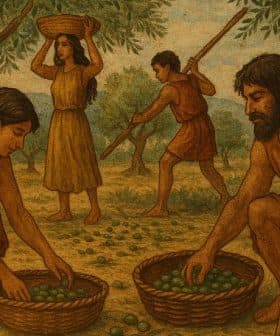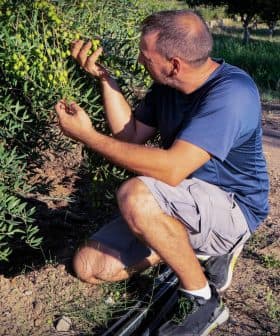Europe’s LIFE Resilience Project Offers Tools to Mitigate Spread of Xylella
LIFE Resilience has presented the results of a four-year-long project to stop the spread of Xyella fastidiosa and identify resistant varieties.
The European Union-backed LIFE Resilience project has been completed after four years, providing olive growers with new tools to combat Xylella fastidiosa. The project’s results include testing new Xylella-resistant olive tree varieties in Italy, Portugal, and Spain, as well as developing technologies to identify and disrupt insect populations that spread the bacteria. Additionally, the project emphasizes the importance of sustainable farming practices and the development of fully resistant olive tree varieties with good agronomic characteristics for the future.
After four years, the European Union-backed LIFE Resilience project has been completed.
Including a broad alliance of researchers, entrepreneurs, farmers and public institutions, the project has provided olive growers with new tools to stop the spread of Xylella fastidiosa, a deadly bacteria that infects olive and almond trees.
The use of resistant varieties is one of the most sustainable measures as it is the most economical and environmentally friendly, based on the natural resistance of the host variety to the pathogen.
One of the project’s most important results is the ongoing testing of new Xylella-resistant olive tree varieties in Italy, Portugal, and Spain.
Other results include the development of new technologies to identify and disrupt insect populations known to be vectors of the bacteria, which causes Olive Quick Decline Syndrome, and some farming best practices to prevent the spread of Xylella fastidiosa sustainably.
See Also:Researchers Reintroduce Bats to Andalusian Olive Groves to Combat PestsCurrently, 18 new olive tree genotypes resistant to Xylella fastidiosa have been sent for testing in the Scorrano area of southern Puglia, which is the part of Italy most severely affected by the bacteria.
Project partners such as Filippo Berio and Balam Agriculture have also begun testing the new genotypes in Tuscany and Spain.
Pedro Valverde Caballero, an agronomist at the University of Córdoba, one of the scientific partners of the project, told Olive Oil Times how significant diagnosing and understanding the spread of Xylella fastidious in Italy has been.
“The bacterium needs a vector to be transmitted, which in this case are several species of insects,” he said.
“The specific case of Italy is a case where a perfect storm has arisen, an ideal climate for the development of the bacterium, a very high population of the insect vector and a large number of host crops, especially olive trees,” Caballero added.
Xylella fastidiosa pauca is the bacterial subspecies that causes Olive Quick Decline Syndrome.
“Most of the olive varieties present in the area are extremely susceptible,” Caballero said. “We have the serious problem in Puglia, where more than 150,000 hectares of olive trees have already been infected.”
All olive varieties assessed or cataloged for susceptibility or resistance have been infected by the bacterium and have symptoms.
“The difference between the varieties cataloged as resistant and the susceptible ones is that the bacterium develops to a lesser extent in the resistant ones and the symptoms that can be observed are scarce or even negligible,” Caballero said.
“Whereas in the same grove, if we have susceptible varieties, these are seriously affected and even dry up completely,” he added.
Leccino and Fs-17, also known as Favolosa, are the two olive varieties that have shown the highest levels of resistance to the bacterium.
“No serious symptoms were observed in the field plantations,” Caballero said. Still, these results might not be sufficient for olive farmers to return affected groves to production.
“The two varieties that are classified as resistant do not have the best agronomic characteristics from the point of view of the farmer,” Caballero said. “So, it is very important to develop new resistant varieties that are better from an agronomic point of view and to work on evaluating the resistance of olive varieties in the global germplasm banks.”
“Fortunately, there is a wide range of olive varieties with a multitude of different agronomic characteristics, and hopefully, there will also be some with resistance to Xylella fastidiosa,” he added.
The new varieties developed in the project come from crosses between resistant varieties and others with good agronomic characteristics. By making these crosses, it is expected that some of the offspring will have resistance to the disease.
“These new varieties are currently planted in affected fields in Scorrano and, in this way, we can evaluate resistance at field level,” Caballero said. “In turn, these new varieties, pre-selections, also are being evaluated in a laboratory in Puglia, under controlled conditions.”
“Currently, we know that several international and national projects are making great efforts in this direction,” he added. “Between the varieties developed through breeding programs and the evaluations of the varieties in the germplasm banks, we can all do our bit to solve this great problem.”
Developing fully resistant olive tree varieties which are also bearers of good agronomic characteristics is considered crucial for the sustainability of the fight against Xylella fastidiosa.
“The use of resistant varieties is one of the most sustainable measures as it is the most economical and environmentally friendly, based on the natural resistance of the host variety to the pathogen,” Caballero said.
The project has also led to the development of a control system to monitor and curtail the vector insect population.
Researchers at the Italian National Research Council (CNR) developed a series of tools for measuring the impact of the insects and trapping the spittlebug in the groves. Automatic traps were tested to verify the presence of the olive fruit fly.
Due to satellite imaging technologies, researchers were also able to map the different affected areas and verify the conditions and agronomic needs of the observed groves.
New tools against Xylella fastidiosa developed by the project include light detection and sensing drones capable of verifying plant growth in the fields. In addition, precision agriculture technologies have also been developed to enhance olive grove management and the efficacy of natural chemical products.
Teresa Carrillo, LIFE Resilience project director and Balam Agriculture researcher, said the use of good practices by the project’s partner has encouraged crop biodiversity and improved plant health on farms, contributing to more sustainable products.
In a recent interview with Olive Oil Times, Vasco Abreu, commercial director of Nutripado and partner of the project, noted how relevant good practices such as maintaining cover crops and fostering biodiversity in the groves are proving to be.
“In almond and olive fields, the vegetation cover in between rows can be adopted by growing leguminous and other mixed plants that maintain moisture in the soil and offer nutrition to a series of beneficial microbes, which fix necessary elements in the soil,” he said.
“Applying this approach also means that farming might also capture carbon, as the leguminous plant cover can sequester up to eight tons of carbon per hectare,” Abreu added. “They also sequester nitrogen, which enhances the fertility of the soil.”
Pedro Fevereiro, the executive director of Innovaplant Protect, told Olive Oil Times that “this project can effectively reduce the vector insect population by adopting structures, such as bushes, flowers or other vegetable covers.”
“Biodiversity can also help tackle climate change by reducing fertilizer use and bringing farmers to more nature-friendly solutions,” he added. “It can also reduce water usage or pesticides.”
The best practices for olive, almond and other woody crops such as vines and citrus are replicable and can be expanded.
As a result, the Spanish Association of Young Farmers and Ranchers (Asaja) confirmed that the dissemination of this new set of sustainable practices has already started among its members.
Share this article


